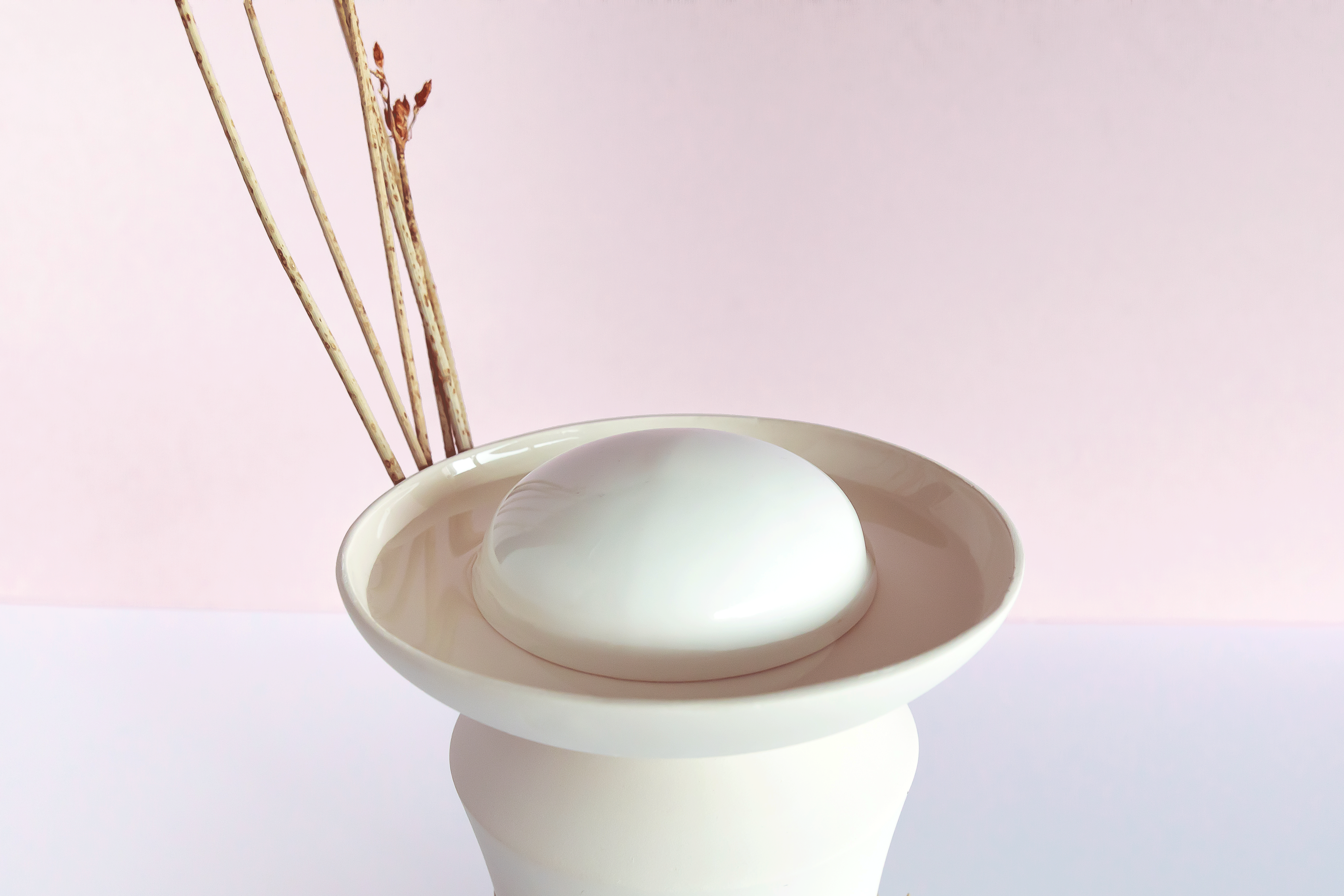[Raccogliere]
Raccogliere (Italian »to gather, to collect«) offers a new perspective on the changing climate of the Venice lagoon. Through a set of tools to process Salicornia—a halophyte common in the marshlands of Venice, the project speculates on a possible new culture.
![01. Pickling jar. [Earthenware, kelp].](https://freight.cargo.site/t/original/i/7f718cac13ec06f14b994c1d84812785864c1e0099f3f0e97ba3e3281ecdaf60/851A2194-copy.jpg)
In the unique location of Venice, between land and sea, extreme weather conditions have constantly transformed the lagoon, as well as the city. Today, farmers lose their fertile grounds bit by bit as salinization slowly forces its way through the land, threatening their livelihoods. Yet in these extreme conditions, some plants are thriving—halophytes, salt-loving plants. One of these, salicornia, is found in growing abundance in the lagoon’s intertidal zones, resilient to the harsh saltwater and rising sea levels. Known also as Sea Asparagus, Sea Bean, Glasswort, Pickleweed, and Samphire, the plant has many possible uses—from food resources and a salt substitute to industrial compounds. Moreover, as a pioneer plant, salicornia is essential for the Barene—Venice’s salt marshes— as it consolidates the soil and sets the ground for other plants to grow.
Despite the growing abundance of Salicornia in the lagoon, its many possible uses, and its high market value, most Venetians are not making use of it. The Barene are protected by UNESCO and other authorities, and harvest is prohibited by law, making salicornia that grow naturally on the marshes out of reach. On private lands, on the other hand, farmers still treat it as weeds invading their gardens, unaware of its potential benefits.
Despite the growing abundance of Salicornia in the lagoon, its many possible uses, and its high market value, most Venetians are not making use of it. The Barene are protected by UNESCO and other authorities, and harvest is prohibited by law, making salicornia that grow naturally on the marshes out of reach. On private lands, on the other hand, farmers still treat it as weeds invading their gardens, unaware of its potential benefits.


![04. Fermentation jar. [Earthenware, rush].](https://freight.cargo.site/t/original/i/02af4fcb498498bf59d62157d6d1aaaa08b4c07e16d0f4869b33641886e4cc86/851A2216-wide.png)
But as the land transforms the vegetation, the local culture must adapt to the new conditions. Through a collection of tools, the project speculates about a possible future of the lagoon when Venetians will recognize the many benefits of salicornia and other halophytes, and gain access to harvest, cultivate, and process it for different uses. The tools are intended to use salicornia as a salt substitute—taking advantage of the natural salty properties of the plant and referring to Venice’s history in dominating the salt trade in Europe.
Based on traditional crafts and local materials, the tools were designed as an evolution of the Venetian material culture. Each embodies a different element of the lagoon; fermentation and pickling jars were inspired by the traditional Albarello—a ceramic storage jar dating back to the 15th century. The fermentation jar uses water as a sealing element, and with rush ornaments, it acts as a small marshland one can take home. The pickling jar is sealed with kelp—invasive algae common to the lagoon. The saltshaker is covered by the same algae, and with its rounded bottom, it is in constant movement, like the ever-changing landscape of the intertidal zones. Lastly, the drying rack, made from willow and rush, is inspired by the Italian Crivo. Hanged with a fishing net and anchored with a fishing sinker, it is designed as an evolution of the local fishing culture.
For the research, we joined forces with Sigrid Schmeisser, who complemented the project with a dedicated bi-lingual publication featuring local voices calling for regenerative practices, inviting the local community to rethink the commons in the lagoon and aiming to form a resilient society.
Based on traditional crafts and local materials, the tools were designed as an evolution of the Venetian material culture. Each embodies a different element of the lagoon; fermentation and pickling jars were inspired by the traditional Albarello—a ceramic storage jar dating back to the 15th century. The fermentation jar uses water as a sealing element, and with rush ornaments, it acts as a small marshland one can take home. The pickling jar is sealed with kelp—invasive algae common to the lagoon. The saltshaker is covered by the same algae, and with its rounded bottom, it is in constant movement, like the ever-changing landscape of the intertidal zones. Lastly, the drying rack, made from willow and rush, is inspired by the Italian Crivo. Hanged with a fishing net and anchored with a fishing sinker, it is designed as an evolution of the local fishing culture.
For the research, we joined forces with Sigrid Schmeisser, who complemented the project with a dedicated bi-lingual publication featuring local voices calling for regenerative practices, inviting the local community to rethink the commons in the lagoon and aiming to form a resilient society.
![05. Saltshaker. [Earthenware, rush, kelp].](https://freight.cargo.site/t/original/i/a4c7fbe6ad548859ebb53baf86ebe2d1b0bced7c6e99c749600dcef3f16bb4b0/851A2251-copy.jpg)
![06. Drying rack. [Rush, willow, fishing twine, fishing sinker].](https://freight.cargo.site/t/original/i/0a82815745c4d18528adc21cd0def9de21c23177d6cb3caf54fffc4865349f1a/Net-closeup.png)
